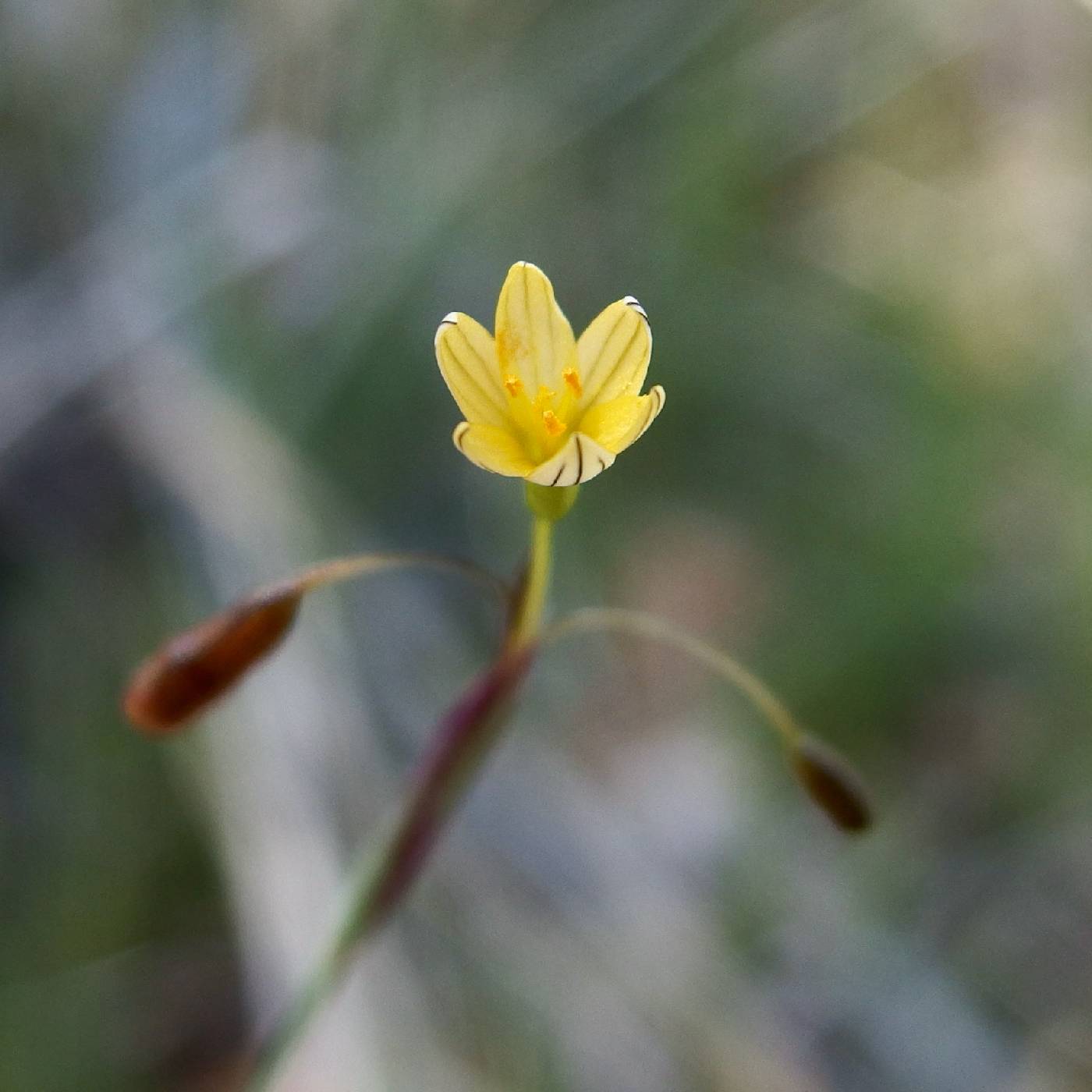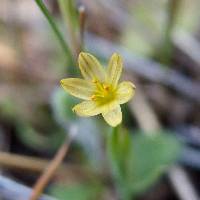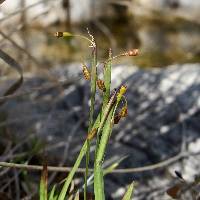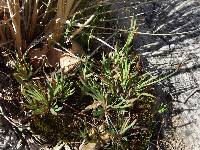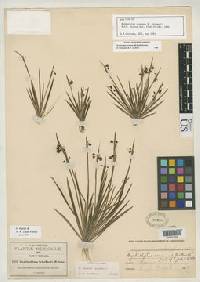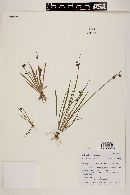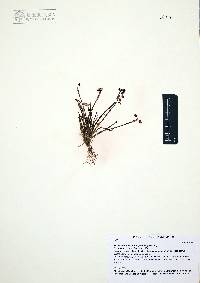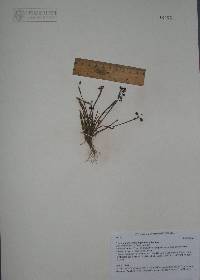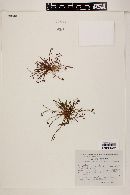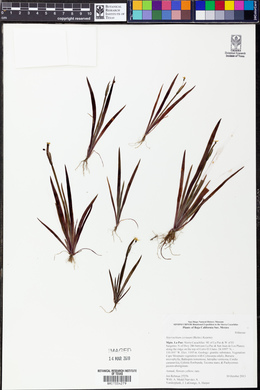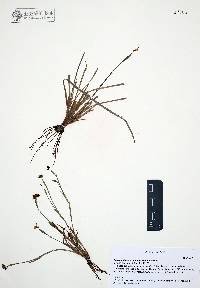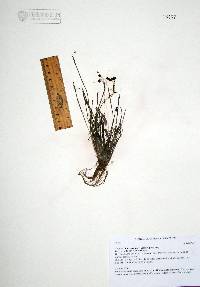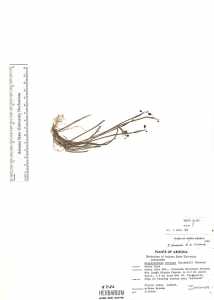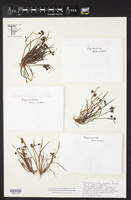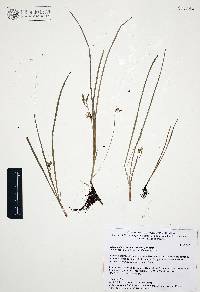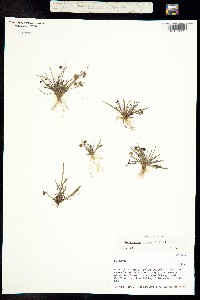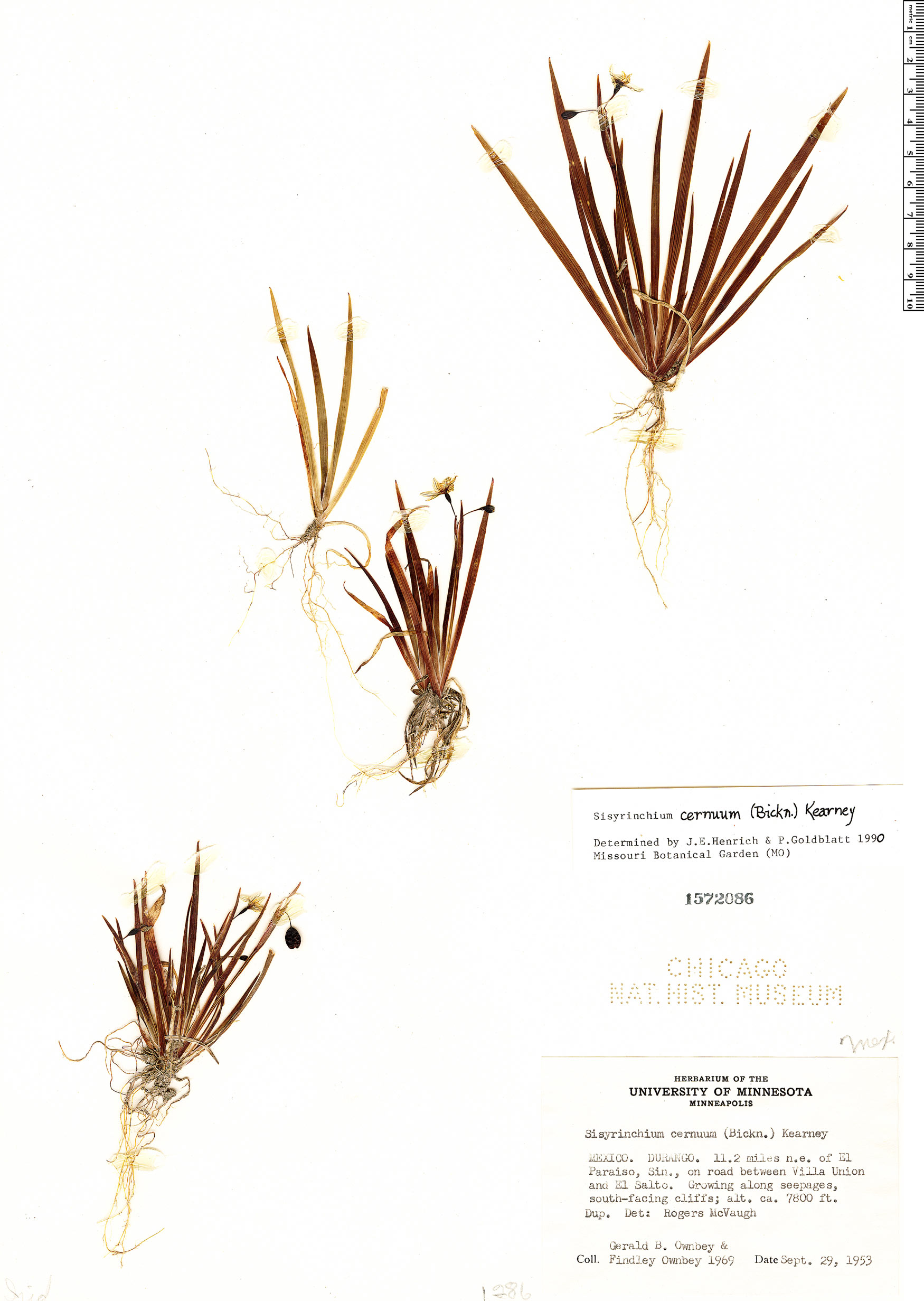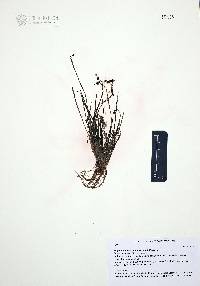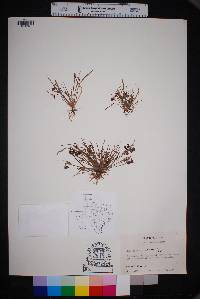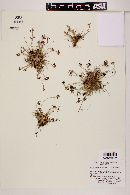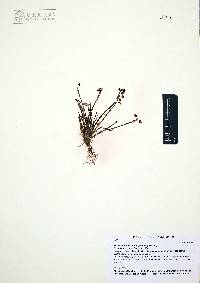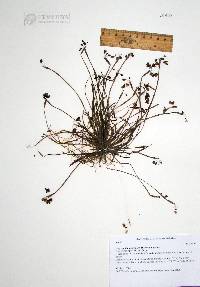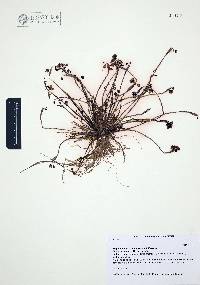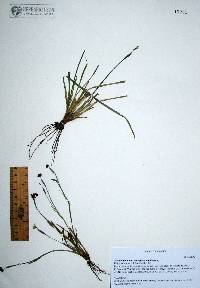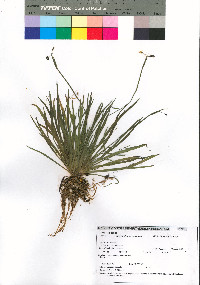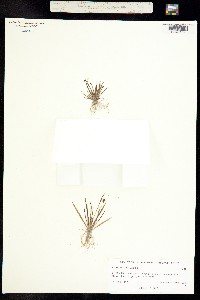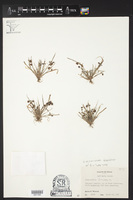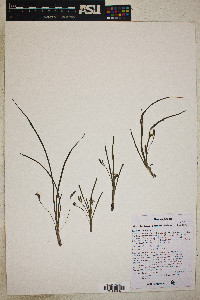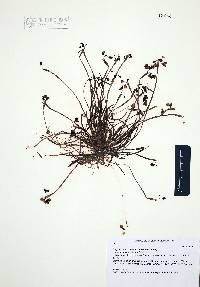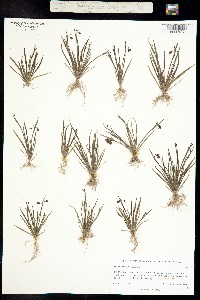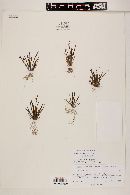
|
|
|
|
Family: Iridaceae
nodding blue-eyed grass, more...Nodding Blue-Eyed-Grass, nodding blueeyed grass
[Hydastylus cernuus, moreSisyrinchium powellii Warnock] |
Herbs, annual, cespitose, medium olive when dry, to 2 dm, not glaucous. Stems simple, 0.5-2 mm wide, glabrous, margins entire to denticulate apically, similar in color and texture to stem body. Leaf blades glabrous, bases not persistent in fibrous tufts. Inflorescences borne singly; spathes green, glabrous, keels entire; outer 14-41 mm, 5-12 mm longer than inner, tapering evenly towards apex, margins basally connate 3.3-5 mm; inner with keel evenly curved to straight, hyaline margins 0.1-0.5 mm wide, apex acute to rounded, ending 0-1.1 mm proximal to green apex. Flowers: tepals yellow to orange, usually with brownish veins; outer tepals 2.6-5 mm, apex acute to rounded; filaments connate basally, glabrous; ovary similar in color to foliage. Capsules light to dark brown, globose, 3-8 mm; pedicel recurved. Seeds hemispherical, with deep depression on flattened side, 0.9-1.1 mm, rugulose. Flowering early spring--late summer. Moist areas, meadows, stream banks, woods; 1000--2400 m; Ariz.; Mexico (Chihuahua, Durango). Plant: annual herb; erect stems, to 20 cm tall; ROOTS fibrous; STEMS 0.5-2 mm wide, simple, the margins entire to slightly minutely dentate, the surface glabrous Leaves: folded lengthwise in iris-like fashion but somewhat flexuous, mostly basal and distichous, the margins slightly hyaline basally; 1.5-4.5 mm wide INFLORESCENCE: an umbel with 2 spathe bracts, the lower (outer) bract enclosing the other (inner); SPATHE BRACTS with the dorsal keels entire; outer bract 14-41 mm long, tapering evenly to the apex, the margins connate basally 3.3-5 mm; inner bract 10-15 mm long, the hyaline margin narrow to moderately wide, ending at the apex, the base straight to slightly curved as it emerges from the outer bract Flowers: yellow to orange and generally with brownish veins; pedicels recurved in fruit, glabrous, at anthesis equalling or longer than the inner bract; tepals 2.6-5 mm long, the outer with acute or obtuse, non-apiculate apices; anthers 0.5-1.6 mm long; filaments united basally; ovary glabrtous Fruit: FRUITS capsule, 3-6(-8) mm long, generally nearly spherical, light to dark brown; SEEDS 0.9-1.1 mm long, hemispherical with a deep depression on the flattened side, the surface reticulate Misc: Ephemeral pools, wet or moist meadows, seeps and streamsides in oak or pine woods; 1000-2400 m (3300-8000 ft); Mar-Sep REFERENCES: Cholewa, Anita F. and Douglass M. Henderson. 1994. Iridaceae J. Ariz. - Nev. Acad. Sci. Volume 27(2), 215. Cholewa and Henderson 1993 Duration: Perennial Nativity: Native Lifeform: Forb/Herb General: Annuals to short-lived perennial with erect stems to 20 cm tall with fibrous roots, the stems 0.5-2 mm wide, simple, margins entire to slightly minutely dentate, the surface glabrous. Leaves: Equitant 1.5-4.5 mm wide, generally basal. Flowers: Spathe bracts with dorsal keels entire, outer bract 14-41 mm long, tapering evenly to apex, margins connate basally, 3-5 mm, inner bract 10-15 mm long, with narrow hyaline margin, ending at apex with straight to slightly curved base; flowers yellow to orange with brownish veins, pedicels recurved in fruit, glabrous, tepals 2.5-5 mm long, outer with acute to obtuse, non-apiculate apices, filaments united basally, glabrous ovary. Fruits: Loculicidal capsule 3-6 mm long, generally spherical, light to dark brown. Ecology: Found along ephemeral waters, in wet to moist meadows, to seeps and springs and along streams from 3,000-8,000 ft (914-2438 m); flowers March-September. Notes: Distinguished by its yellow to orange flowers, but told apart from the very similar S. longipes by the shorter tepals, anthers, and capsule, along with the pedicels that are recurved in fruit, as opposed to being erect to ascending in S. longipes. Ethnobotany: Unknown Etymology: Sisyrinchium is from Greek sisyra for shaggy coat, because the corm tunics recall a shaggy coat, while cernuum means drooping or nodding. Synonyms: Sisyrinchium powellii Editor: SBuckley, 2010 |
This project was made possible in part by the Institute of Museum and Library Services [MG-70-19-0057-19].
Powered by Symbiota

